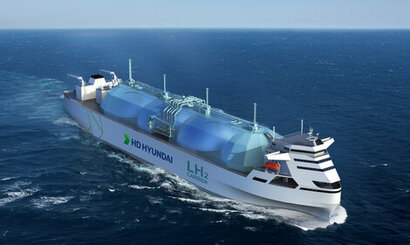
HD KSOE aims to complete the development of the hydrogen carrier technology that enables large-capacity hydrogen transportation and storage by around 2030.
Sustainably produced zero and low carbon hydrogen has been identified as a key part of the world’s energy transition. Efficient transport by ship faces a number of challenges, including the complexity of holding hydrogen at minus 253 degrees Celsius, some 100 degrees colder than LNG, at large scale. But finding solutions to this challenge is vital, as shipping has an important role in unlocking the use of hydrogen in decarbonizing heavy industries, such as steel and cement production.
HD KSOE's new system utilises boil-off gas from hydrogen transport for a hybrid propulsion system, integrating hydrogen DF engines and fuel cells. Collaborating globally, HD KSOE and partners like Woodside Energy and Linde Engineering are exploring new hydrogen transportation and storage solutions, aiming to commercialise their advancements by 2030.
“We are continuously developing world-class technology in liquefied hydrogen following our achievements in methanol, ammonia and CO2 carriers” said Dr. Sungjun Kim, CTO at HD KSOE. “With our hydrogen system, we will lead technology advances in transitioning to a carbon-neutral society.”
Vidar Dolonen, DNV Regional Manager for Korea & Japan, added that many different partners need to be brought together in order to build confidence and overcome the challenges of hydrogen transport for shipping, build on the learnings from other fuels and industries and adapt technologies to the maritime environment.
“This is why we are very pleased to be working with innovative partners to help establish new design standards, that can create the next generation of hydrogen carriers and help this emerging segment develop and succeed” said Mr Dolonen.
For additional information:

